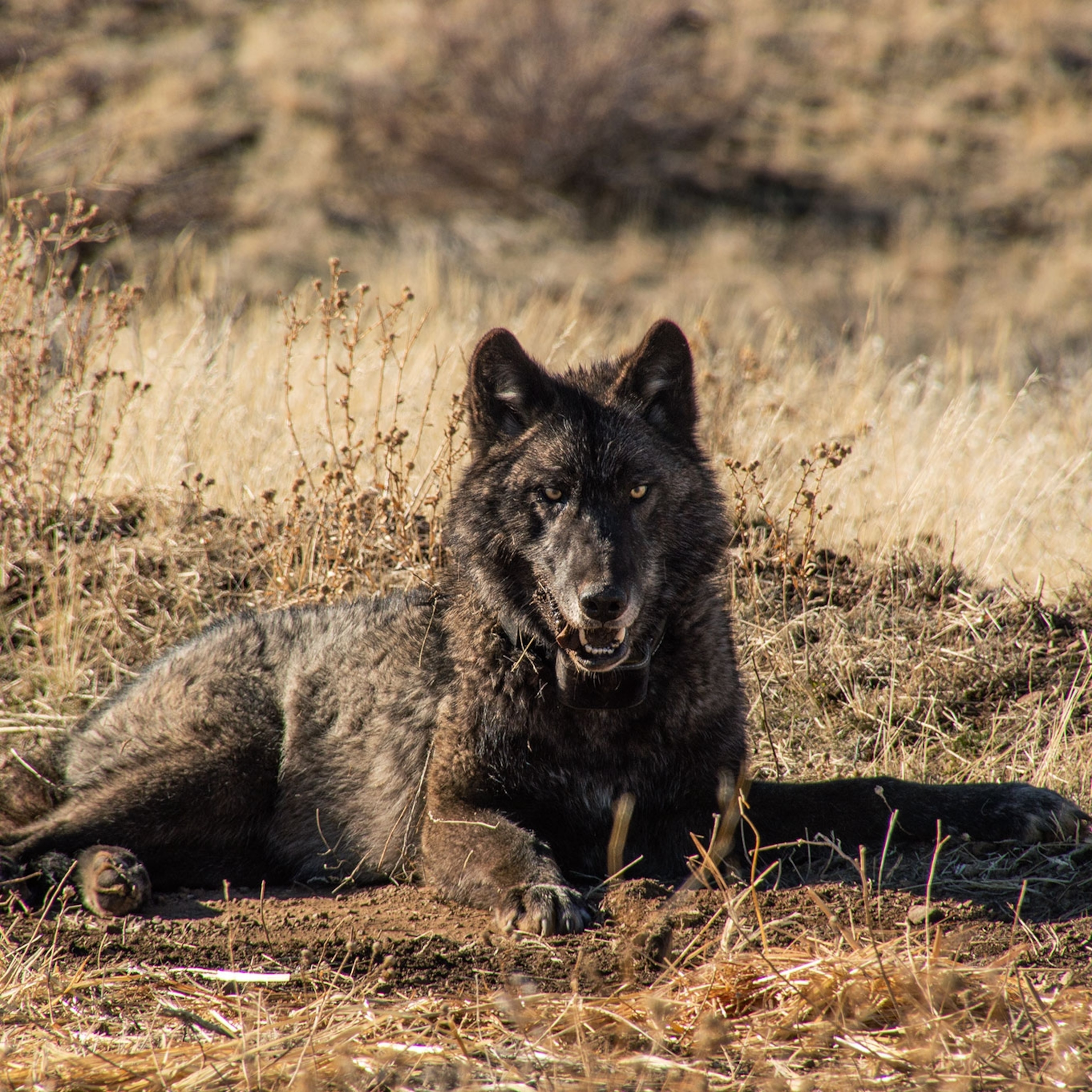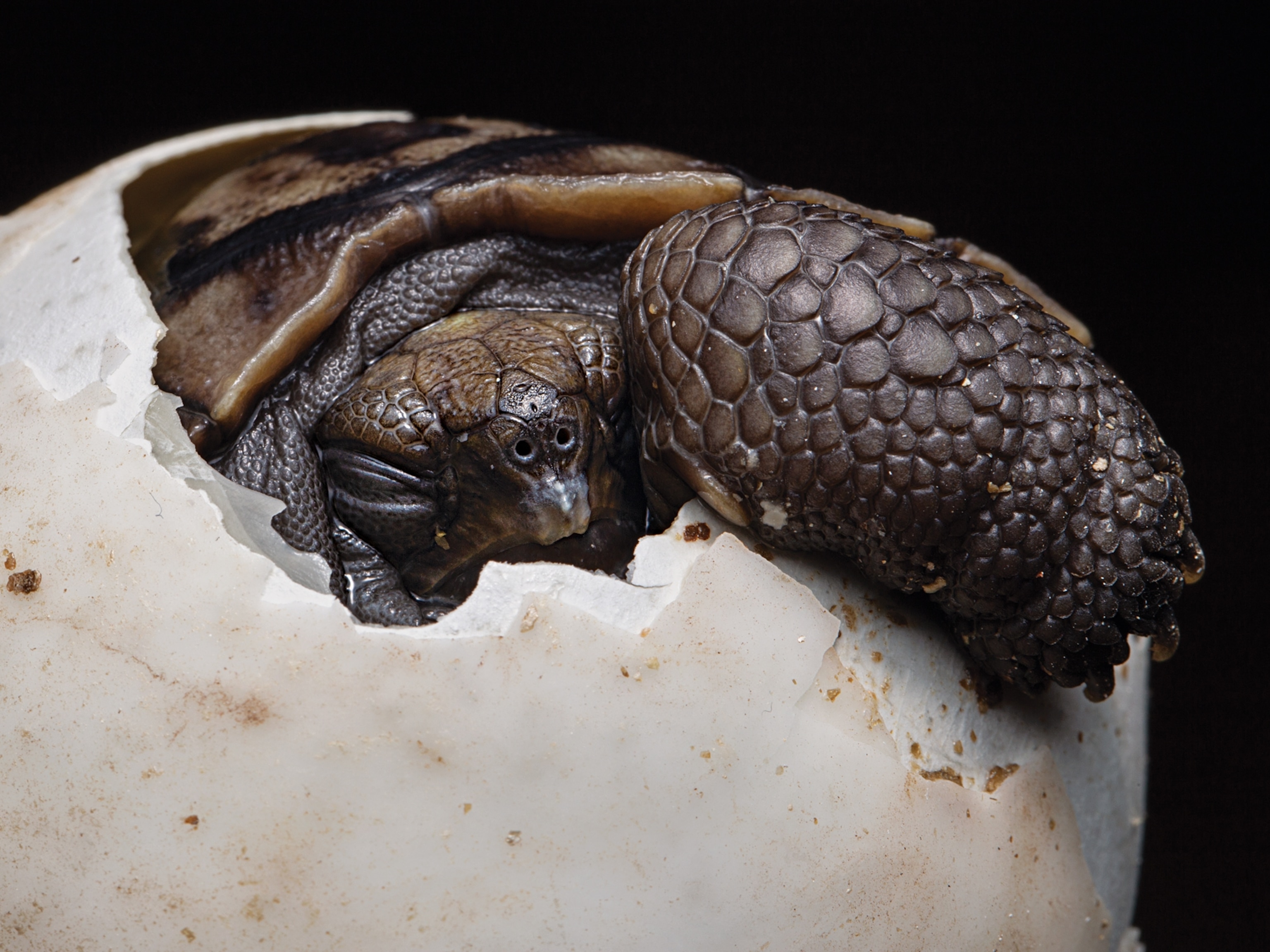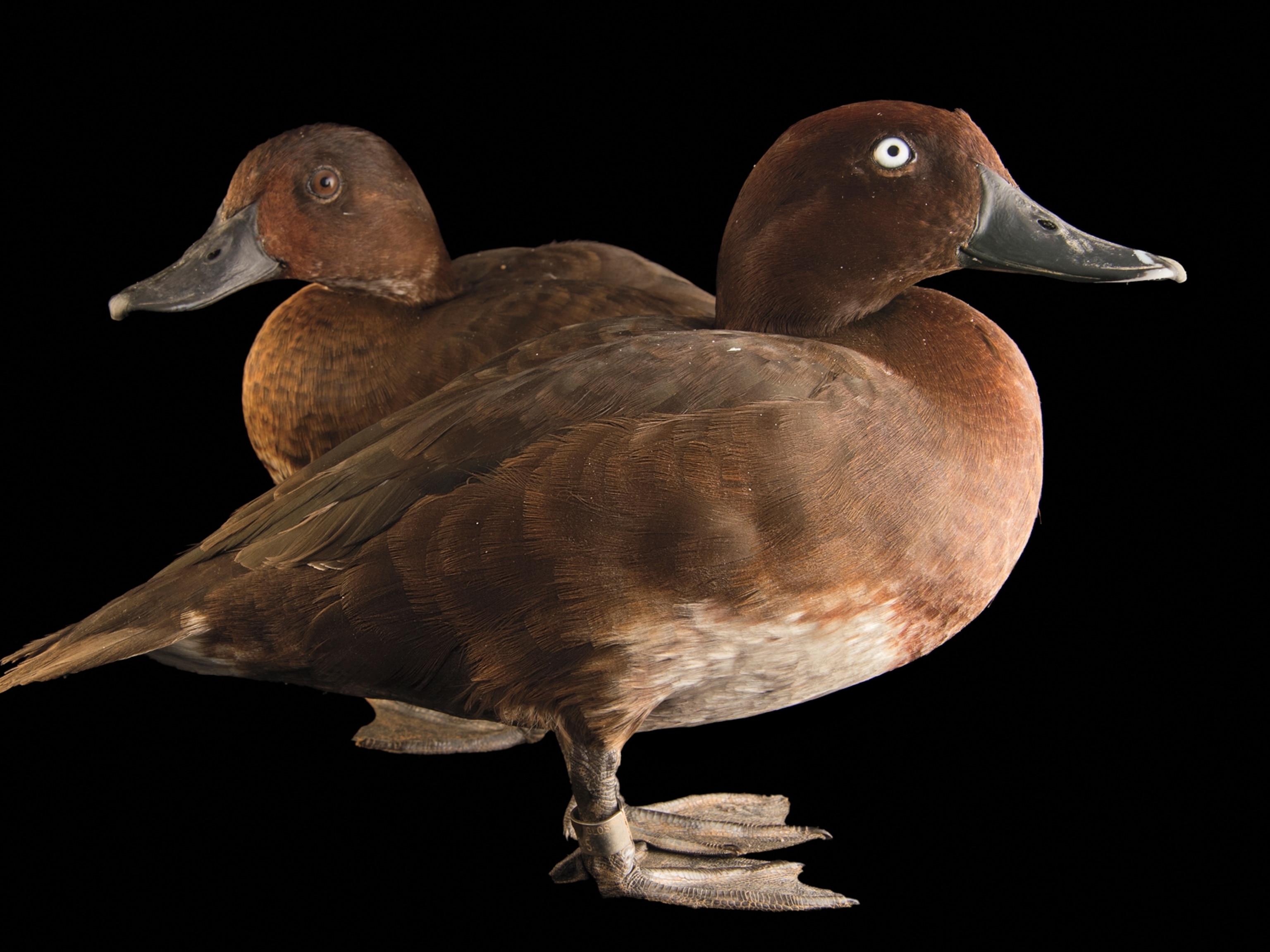
Predator Insurance: When Livestock Becomes Prey, Conservationists Pay
Scientists say there are pros and cons to paying farmers when carnivores eat their livelihood.
A set of amazing images went viral in November when four Kenyan villagers chased down and captured—live—two cheetahs that had been feasting on their goats.
The story may have had a much different ending, with the endangered animals shot like so many others around the world that pose a threat to people's livelihoods. But this lucky pair ended up in the care of the Kenya Wildlife Service because the villagers wanted to be paid for the damage caused by the cats.
Such compensation programs have become more common around the world, although conservation scientists say they have their pros and cons. As with many systems in which cash changes hands, there is potential for fraud. But when used as part of a wider conservation tool kit, compensation can help people and predators coexist, say supporters.
Snow Leopard Insurance Policy
One of the world's most beautiful and mysterious cats, the snow leopard has a taste for sheep and goats. That's one reason why Shafqat Hussain launched Project Snow Leopard nearly 15 years ago in the mountainous Baltistan region of northern Pakistan, his home country. For his work, Hussain was named a National Geographic Emerging Explorer in 2009.
Working with the Baltistan Wildlife Conservation and Development Organization and the Snow Leopard Conservancy, Hussain seeks to minimize conflict with snow leopards—and compensate herders with an innovative insurance program when it occurs.
Some 5,000 people across ten villages take part in the project, but Hussain, an anthropologist as well as a conservationist, notes that funding from outside snow leopard territory is critical. "The international conservation community must realize that there is a recurring cost, as well as a value, involved with having snow leopards in the environment," he said. "And someone needs to pick up that cost."
Without a compensation program in place, Hussain added, the burden falls on those who can least afford it, local herders, which discourages them from letting the big cats live. He pointed to a recent study showing that 55 percent of the diet of snow leopards in his project area was made up of domestic livestock. (Related: "Snow Leopards Need to be Protected ... But How?")
But the Project Snow Leopard plan isn't entirely one of foreign aid handouts. Locals must pay in before they can receive any benefits. "From the start, we thought that if local people had a stake in this it would be more efficient in terms of avoiding fraud," Hussain explained. "Even if that means a premium payment is, say, two percent of a goat's value and they pay perhaps half a percent of that value."
The amount of compensation available varies, depending on what people want and agree to pay within local systems designed for each village, he added. "This means they do all the verification, the disbursement of funds, the collection of premiums, and our main job is basically oversight."
Where possible, Hussain stressed, funds are best used for improving corrals and training herders to prevent as many livestock kills as possible. One drawback of compensation schemes is that people may de-emphasize these preventive practices, because the loss of their animals is reimbursed, he noted.
But Project Snow Leopard has helped to build tolerance among people for the inevitable times when those incidents do occur, said Hussain. In fact, with more snow leopard sightings in recent years and more attention drawn to the species, some local attitudes have become significantly more positive, he said.
"Local people realize that this beautiful animal is something that's valued by the international community and found only in their part of the world," Hussain explained. "When we do DNA population studies and compare remote valleys, people are interested in how many snow leopards their valley has compared to others—in some ways it has become a source of pride for them." (See rare footage of snow leopards caught by a mountain yak herder and video of Hussain explaining his work.)
The Wolf Returns to the West
In North America, many large predators were pushed to the brink of localized extinction, or beyond, while settlers made their way across the continent. More recently some have returned, and wildlife compensation played a key role, supporters say.
Hank Fischer, now with the National Wildlife Federation, created the Defenders of Wildlife wolf compensation trust in 1987. In 23 years it expanded through the northern Rockies and Southwest, paid out more than $1.3 million to ranchers, and helped pave the way for the return of an iconic predator to the landscape of Greater Yellowstone.
(In 2010 the 23-year-old program was transitioned to the various western states and tribes, which began to offer their own compensation under the 2009 Omnibus Public Land Management Act.)
When the idea of reimbursing ranchers first came up in the 1980s, there was plenty of skepticism within the conservation organization, Fischer remembered, including worries about how much it would cost. "We used estimates on numbers of livestock killed by wildlife, and the numbers were pretty low, but some people wondered what would happen if it ended up being far higher. That's when it dawned on me," he said. "We were asking ranchers to take a risk that we weren't willing to take ourselves."
But when Canadian wolves crossed the border and killed livestock in northwestern Montana, Fischer remembered, the group decided to raise money and compensate the ranchers to see what kind of impact that action could have. "It was really interesting how much the controversy over those wolves subsided when we did that," he said. "I think it opened some eyes."
Rancher compensation later played a pivotal role in getting Yellowstone wolf reintroduction efforts off the ground in the 1990s, Fischer added. Just as the wolves were to be released, a ranching organization sought an injunction to stop the project, Fischer said. "To get that injunction they had to show that releasing the wolves would cause harm," he said. "But the judge ruled that because a compensation program was in place, there wouldn't be economic harm."
The process went ahead and, though not everyone agreed, wolves returned to Yellowstone in 1995. "There's no way there'd have been a restoration program without compensation," Fischer said. (Related: Read about the American West's "Wolf Wars" in National Geographic magazine.)
Today, the animals appear back to stay—and now must be managed by wildlife officials to avoid becoming too numerous to sustain a healthy population. But many ranchers still feel they're forced to bear too much of the hardship associated with wolf reintroduction without adequate recompense.
For one thing, it's difficult for authorities to verify just how many animals are killed by wildlife. Wyoming's compensation program now reimburses at seven times market value for livestock killed by wolves and 3.5 times market value for livestock killed by grizzlies, Fischer said, because of the assumption that for every animal found killed by a predator, there are a number of others that met a similar fate but will never be found. But some ranchers feel they still don't get enough pay for the animals that are killed. They say they also may get little or nothing for the toll that wolf packs can take on their surviving cattle from stress that can make them drop weight, abort pregnancies, and avoid prime grazing land because wolves prowl nearby.
Complicating the matter is the fact that certain grazing allotments used by ranchers on public land, often adjacent to Yellowstone, can have a constant threat of predation by wolves or bears. Here, the compensation plan instituted agreements that paid livestock producers fair market value for their U.S. Forest Service grazing permits to the land, under an agreement that the allotments would be permanently retired.
"That's usually sufficient for them to get grazing rights in another location away from the core area, where they don't have the same problems of grizzlies and wolves, or even bison and bighorn sheep, which can transmit disease to livestock," said Fisher. "It's been a relatively non-controversial way to resolve these conflicts around the park," he said, adding that grazing rights for close to 600,000 acres (240,000 hectares) around Yellowstone have been retired in the last decade.
Denning for Dollars
Wolves, wolverines, and Eurasian lynx roam the wilds of Sweden. But where authorities once encouraged a bounty system to eliminate these threats to herders, they now have an innovative approach to managing them in viable populations.
Sweden compensates domestic sheep and cattle losses on verified kills, much like in the American West. However, the Scandinavian nation uses an entirely different system to compensate Sami people for predation on their semi-domesticated reindeer. It began in 1996 after radio-collar studies showed that a system of payment for documented kills simply didn't work because many free-ranging reindeer were never found dead for verification.
"Historically, compensation programs typically pay for documented livestock losses," said Colby College environmental scientist Philip Nyhus, who studies the issue. "In Sweden the government pays herders for things like the number of wolverine dens that are observed or the number of individuals that are recorded in a territory, and then communities are compensated for the assumed damage." Reindeer are the main prey of these animals, so it's assumed losses are higher where the predators live in greater numbers.
The system relies on yearly surveys of lynx, wolverine, and wolves—though wolves have a low impact on reindeer because they live mostly outside their grazing grounds, explained Henrik Andrén, of the Swedish University of Agricultural Sciences.
Currently, each reindeer management unit gets 200,000 Swedish krona ($30,625 U.S.) for each lynx family found and the same amount for each wolverine natal den, said Andrén. They also receive compensation for brown bear and golden eagle predation, which currently is not surveyed but simply scaled up or down depending on the size of each unit.
The compensation is designed to cover the direct loss in reindeer harvest, the loss of female reindeer's future production, and the extra work for farmers and herders caused by the impact of predators, said Andrén. He added that lynx and wolverine losses are significant, perhaps 20,000 to 40,000 animals each year from a herd that fluctuates from 250,000 to 320,000 head.
Nyhus said that the system takes a shot at addressing one major problem with compensation schemes around the world—assessing how well they are working. With schemes that simply reimburse livestock losses, it can sometimes be difficult to determine what impact they have, but the Swedish plan makes payments directly tied to the achievement of its conservation goals.
The theory is that this approach motivates farmers and herders to take more measures to protect their livestock with fencing, guard dogs, or other methods. That's because farmers can get more money if carnivore numbers are higher, and stand to keep more of the money if they have to replace fewer animals lost to predators.
Like any system, the Swedish plan does have drawbacks. Herders and conservationists must compromise on what constitutes an appropriate predator population and rate of livestock loss, which often leaves some dissatisfied. Surveying and measuring wildlife populations is also more challenging, and costly, than recording livestock kills.
With a larger number of people and stakeholders in an area, Nyhus added, it can be difficult to determine exactly who gets the credit and how the money should be divided. The Swedish system allows villages to determine their own distribution schemes, which may pay individuals and/or fund community coffers.
Nyhus and Fischer were part of a team that studied the successes and struggles of compensation programs worldwide. In most cases where populations of large predators have enjoyed a managed recovery, Nyhus said, compensation programs have been available. But he stressed they work best as part of a toolbox for mitigating human/wildlife conflict, along with other efforts like reducing mortality of natural prey, reducing illegal hunting, increasing habitat protection, and running educational programs.
And while challenges—from wolf-pack kills to elephants trampling a year's rice crop overnight—and outcomes differ around the world, Nyhus suggests that one constant has emerged. "I think most of the studies that look at compensation come to the same conclusion," he said, "that the best thing to do about human/wildlife conflict is to take steps to reduce how often it happens in the first place."







